Diabetes Glossary.
| Term | Definition |
|---|---|
| A1C |
A test that sums up how much glucose has been sticking to part of the hemoglobin during the past 3–4 months. Hemoglobin is a substance in the red blood cells that supplies oxygen to the cells of the body. The AIC goal for patients in general is an A1C goal of less than 7%. The A1C goal for the individual patient is an A1C as close to 6% as possible without a considerable amount of low blood glucose. |
| ACE inhibitor |
A type of drug used to lower blood pressure. Studies indicate that it may also help prevent or slow the progression of kidney disease in people with diabetes. ACE is an acronym for angiotensin-converting enzyme. |
| Autoimmune Process |
A process where the body’s immune system attacks and destroys body tissue that it mistakes for foreign matter. |
| Beta Cells |
Cells that make insulin. Beta cells are found in areas of the pancreas called the Islets of Langerhans. |
| Bladder |
A hollow organ that urine drains into from the kidneys. From the bladder, urine leaves the body. |
| Blood Glucose |
The main sugar that the body makes from the food we eat. Glucose is carried through the bloodstream to provide energy to all of the body’s living cells. The cells cannot use glucose without the help of insulin. |
| Blood Pressure |
The force of the blood against the artery walls. Two levels of blood pressure are measured: the highest, or systolic, occurs when the heart pumps blood into the blood vessels, and the lowest, or diastolic, occurs when the heart rests |
| Blood Sugar |
See “Blood Glucose” |
| Calluses |
Thick, hardened areas of the skin, generally on the foot, caused by friction or pressure. Calluses can lead to other problems, including serious infection and even gangrene. |
| Carbohydrate |
One of three main groups of foods in the diet that provide calories and energy. (Protein and fat are the others.) Carbohydrates are mainly sugars (simple carbohydrates) and starches (complex carbohydrates, found in bread, pasta, beans) that the body breaks down into glucose. |
| Cholesterol |
A substance similar to fat that is found in the blood, muscles, liver, brain, and other body tissues. The body produces and needs some cholesterol. However, too much cholesterol can make fats stick to the walls of the arteries and cause a disease that decreases or stops circulation. |
| Chronic Kidney Disease (CKD) |
Retains fluids and harmful waste builds up because the kidneys no longer work properly. |
| Corns |
A thickening of the skin of the feet or hands, usually caused by pressure against the skin. |
| Dehydration |
The loss of too much body fluid through frequent urinating, sweating, diarrhea, or vomiting. |
| Diabetes |
The short name for the disease called diabetes mellitus. Diabetes results when the body cannot use blood glucose as energy because of having too little insulin or being unable to use insulin. See also type 1 diabetes, type 2 diabetes, and gestational diabetes. |
| Diabetes Pills |
Pills or capsules that are taken by mouth to help lower the blood glucose level. These pills may work for people whose bodies are still making insulin. |
| Diabetic Eye Disease |
A disease of the small blood vessels of the retina of the eye in people with diabetes. In this disease, the vessels swell and leak liquid into the retina, blurring the vision and sometimes leading to blindness. |
| Diabetic Ketoacidosis |
High blood glucose with the presence of ketones in the urine and bloodstream, often caused by taking too little insulin or during illness. |
| Diabetic Kidney Disease |
Damage to the cells or blood vessels of the kidney. |
| Diabetic Nerve Damage |
Damage to the nerves of a person with diabetes. Nerve damage may affect the feet and hands, as well as major organs. |
| Dialysis |
A method for removing waste from the blood when the kidneys can no longer do the job. |
| Dilated Eye Exam |
Eye drops are placed in the eyes to widen the pupils to see the retina better. The eye doctor will look for changes in the retina in the back of the eyes. |
| Diphtheria |
An acute, contagious disease that causes fever and problems for the heart and nervous system. |
| EKG |
A test that measures the heart’s action. Also called an electrocardiogram. |
| Gestational Diabetes |
A type of diabetes that can occur in pregnant women who have not been known to have diabetes before. |
| Glucagon |
A hormone that raises the blood glucose level. |
| Glucose |
A sugar in our blood and a source of energy for our bodies. |
| Hyperglycemia |
A condition that occurs in people with diabetes when their blood glucose levels are too high. Symptoms include having to urinate often, being very thirsty, and losing weight. |
| Hypoglycemia |
A condition that occurs in people with diabetes when their blood glucose levels are too low. Symptoms include feeling anxious or confused, feeling numb in the arms and hands, and shaking or feeling dizzy. |
| Insulin |
A hormone that helps the body use blood glucose for energy. The beta cells of the pancreas make insulin. When people with diabetes can’t make enough insulin, they may have to inject it from another source. |
| Kidneys |
Twin organs found in the lower part of the back. The kidneys purify the blood of all waste and harmful material. They also control the level of some helpful chemical substances in the blood. |
| Pancreas |
An organ in the body that makes insulin so that the body can use glucose for energy. The pancreas also makes enzymes that help the body digest food. |
| Self-Monitoring Blood Glucose |
A way for people with diabetes to find out how much glucose is in their blood. A drop of blood from the fingertip is placed on a special coated strip of paper that “reads” (often through an electronic meter) the amount of glucose in the blood. |
| Type 1 Diabetes |
A condition in which the pancreas makes so little insulin that the body can’t use blood glucose as energy. People with type 1 diabetes need to take insulin every day. |
| Type 2 Diabetes |
A condition in which the body either makes too little insulin or can’t use the insulin it makes to use blood glucose as energy. All people with diabetes need to eat healthy foods stay at a healthy weight and be active everyday. People with type 2 diabetes often need to take diabetes pills or insulin. Type 2 diabetes is the most common from of diabetes. |



